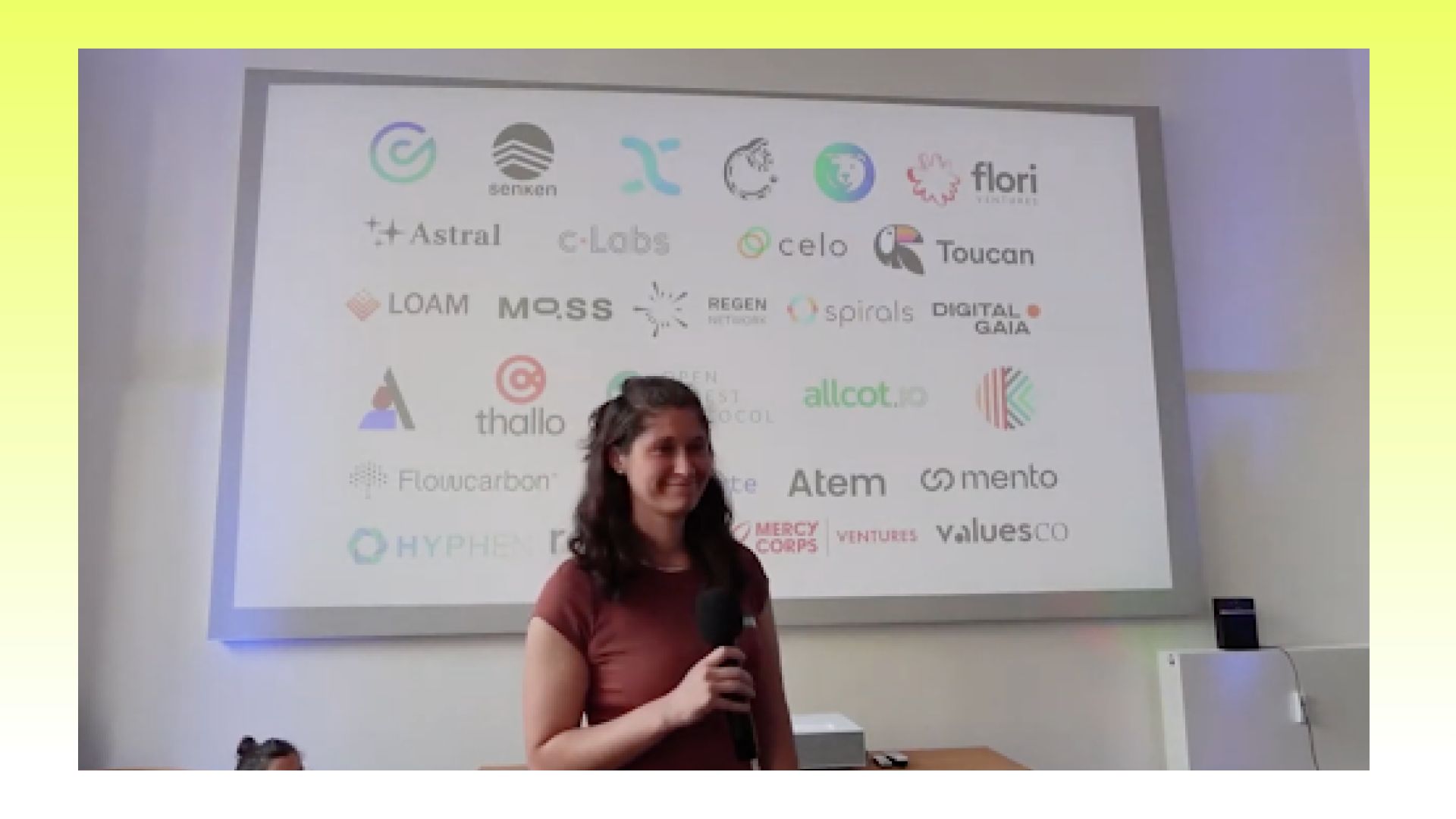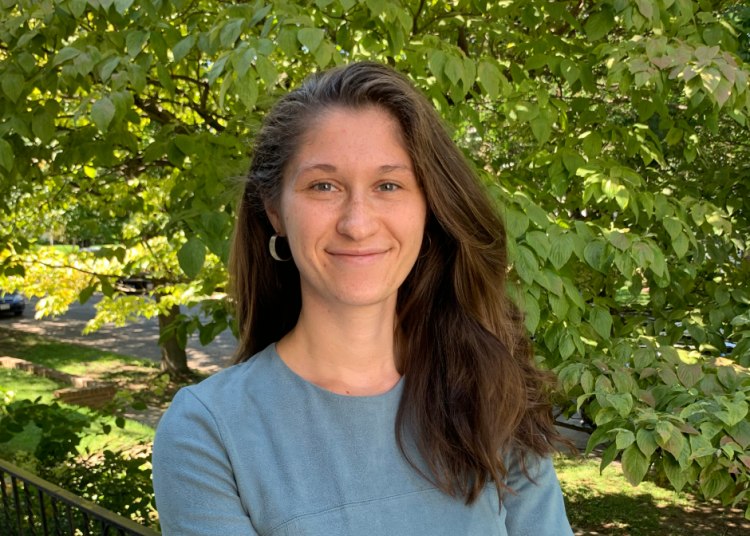Alison Filler, the Community Lead of the Climate Collective has a kind of energy that gently captures your attention. She is keenly percipient of the market that is emerging out of the haze of a daunting climate crisis. Her conviction to find solutions and support others who do the same, is inspiring.
We spoke about the significance of climate tech, how blockchain could and should play a central role and what the Climate Collective does to enable both. Alison explained the potential to fundamentally change the way global projects are financed and resources are shared. She emphasized the importance of community and collaboration in the face of many common and individual challenges.
Our globally shared fate
Our conversation swiveled from tech topics to market considerations and human aspects. Everything is interlinked.
“Part of the challenge with climate change is that on one hand, we all experience it uniquely. I live in London. The way I’m experiencing climate change is completely different from how someone in Indonesia is experiencing it, which is completely different from the way someone in California is experiencing climate change. […] At the same time, we have a shared fate, we have a common outcome that we’re all facing together.” Alison observes.

Carbon emissions are an example we all know. It’s of minor significance where and who emits CO2 into the atmosphere that embraces the entire earth. “Our global economy is shared no matter how.” Alison points out. Whether we are the manufacturer or the consumer, the buyer, seller or transporter, we are all part of the same CO2-spitting machine.
“There will be people who experience it harsher and sooner than others, and there will be people who have more or less resources to address the way our climate is changing. So it is a mass coordination problem.” She continues her chain of thought.
“Blockchain and Web 3 – these are mass coordination tools.[..] They allow for the exchange of data, the storage of data and resources; And new definitions of value and exchanges of value in a decentralized way, and at a scale and speed that can meet the urgency of our climate change challenge”.
Essentially, she’s saying blockchain and Web3 capabilities can meet the urgency of climate challenges at the necessary speed and scale. The emphasis here is on urgency. While other solutions may be out there, they usually lack the speed or scale.
“Why do we hand out band-aids against cancer?”
Years ago, Alison worked with an NGO that focused on providing clean water and efficient energy technologies to rural and refugee communities. “I was doing program management and implementation in East Africa and the Caribbean, both in rural communities, and with refugees. I loved the work.”
It was there that she realized the challenges weren’t lack of funding and resources, but their distribution and management. “We have really cost-effective technologies that can make a lot of people’s lives significantly better and yet we have a really hard time fundraising for these. Why is that? And why are we basically handing out band-aids to someone who’s, metaphorically struggling with cancer?”

In trying to find ways to improve the money flow, she learned that this is a global issue. To change the way money works, she first needed to understand it better. Alison decided to go to business school. It was around the same time Cryptocurrencies appeared on the horizon.
But the digital currencies didn’t capture Alison’s attention until a friend gave her an example: “She said, ‘imagine that you’re working with a woman in rural Kenya or rural Uganda who can move across the border and not lose access to her financial assets.’ And that’s what it is, in terms that I could finally appreciate. If you had borderless assets, you could actually leave your home if you had to and not abandon all of your wealth.“
“Very soon after that I really started to see how it could apply to climate and climate finance. How we could move the scale of finance to trillions that we would need in such a short amount of time that we could actually have a chance of addressing this challenge.“
In 2022 she joined the Climate Collective that was already working in that direction.
Apply, refine, test, learn and repeat
“There’s so much promise in this innovation. We see so many groups doing phenomenal work innovating.” she says with an air of admiration in her voice. “The point is that the technology itself gets adopted and applied and refined and tested. And we need research to see, where it’s the most useful, where it’s the most applicable and where it’s not. Let’s be honest about where it’s not having an impact, so we can move on and find other goals where it is.“ With this she hints at the purpose the Climate Collective has set for itself.
“We do see the immense potential and capability of this technology to drive more transparency in climate finance and more traceability in carbon markets,” she affirms.

“For example, the end-to-end digital carbon market. It’s already a very vibrant space. We have a lot of members who operate in that space because it was one of the first use cases, where this tech intersection evolved – the voluntary carbon market in particular.”
“A lot of people are doing tokenization of environmental assets that are going on marketplaces – whether that’s B2C or B2B. We have a lot of people who are doing digital monitoring or measurement reporting and verification – digital MRV. It’s a really big space, really important.“
It sounds like Alison is about to reveal a wealth of new possibilities. However, before we continue introducing the ideas and technologies Alison is excited about, let’s first take a look at how the Climate Collective functions as an innovation network.
“The Climate Collective operates as a kind of ecosystem enabler”
In a nutshell, the idea behind the Climate Collective is to find groups experimenting with innovative tech for climate action, particularly in the Web3 space. The Collective documents successes – and also failures, so everyone can learn. The next step is to scale adoption through partnerships with large organizations, such as regulators, corporations and financial institutions.
To accomplish this “We’re trying to create an ecosystem that is unlocking more opportunities than any one of us could address on our own if we were going at it independently. Because we each have unique strengths, unique backgrounds, unique perspectives.” explains Alison.
“This is a global effort, right? So, we need all the tools and all the folks we can get working on this”.
The Climate Collective currently has 35 member companies. The organization provides them with resources they need to grow. At the same time, they identify mutual challenges and address them in a more orchestrated way to help them thrive and build credibility together.
“We support these companies with marketing to boost awareness in this space by giving them speaking opportunities when we’re at conferences and we bring groups along, giving them a platform to share”

The innovators can harness the collective intelligence and the knowledge of industry advisors. The Collective has a program called Office Hours, where advisers in areas like VC and fundraising, marketing, technology, environmental science, legal and regulatory affairs and more answer questions. Instead of spending a lot of money on a consultant, you can get a 30-minute pro-bono session.
Alison adds, “We’ve had programs on leadership coaching and development as well. Many entrepreneurs in the space are first-time entrepreneurs. How do you go from being a builder and a technologist [..] to being a CEO? It’s a very different skill set.”
The Collective aligns the various activities and initiatives to the gaps they identify in the network regarding knowledge or resources. They are also able to pick up on financial or regulatory trends that may have an impact. This lets them assess the consequences and develop strategies the entire network benefits from.
The ‘impact network’ as Alison calls it, works to advance climate action through technology, but not any specific entity. “We are building out a group of companies that we don’t have a financial stake in, but we have a vested interest. We want to see this tech grow, the potential that they offer, and how we can help them to succeed.”
Innovation’s delicate balancing act between uniqueness and consensus
So far, we haven’t addressed the question of funding. But financing is a big chunk of an entrepreneur’s worries and anyone who aims to support them needs to think about it.
“We do provide funding in terms of grants. We, thus far, haven’t taken any investments. We don’t hold equity or debt, so we’re not an impact investor in that sense.”
Alison explains the reasoning behind it: “That is partially because we think the market is at a stage where it needs to be trying a lot before it scales rapidly. It needs to be testing and trying and failing and learning. And grant capital is particularly useful for that. It can be really effective first loss capital, you don’t have to deliver certain growth numbers, it allows you to pivot more”
“The market is at a place where we have far more to gain by working together, than by being in one-to-one, direct competition with each other. “

It all makes perfect sense and begs the question, what do they expect from their members in return?
“As far as the qualities of a member that we look for, we look for value additives. So, can they offer that unique perspective? Are they willing to build with other people in the collective?”
“Interoperability is really important for us. We want to make sure that the tech that we are supporting can be plugged in to other tech that’s already available. […] finding ways that different partners can work together to build tech on top of one another to make this as much of an open source and efficient ecosystem as possible.”
At the same time though, “we don’t want to create universal consensus because that’s not innovating, that’s just agreeing – and maybe agreeing on the wrong direction. Innovation takes a lot of different perspectives and sometimes some disagreement. So, while we do want to promote alignment among builders, we don’t necessarily want to create consensus all the time. That may not lead us to the best outcome for the technology.”
Community plays a major role in building the network. Just like the members are always looking for new resources and information, they are also “on the lookout for new groups with unique perspectives, or a unique strength. There are certain areas where blockchain is uniquely applicable for climate activity.”
Give and take of community and tech
“It’s not just the carbon space. But we are also talking about measurement, which can help us with resource efficiency, and data transparency and accuracy.
“We also want to be thinking about climate justice. How can we involve communities on the ground in benefit sharing in participation in these programs? There are new techs that are designed specifically for communities to be data enumerators and confirm what we’re tracing on the satellite.”

“Because if we just completely automate and eliminate all humans from this process, that’s not the goal. Part of it is to engage communities more equitably as well and make sure that people who are facing some of the greatest climate threats are also benefiting and participating.”
To better understand what she’s talking about, I asked Alison to share some examples of particularly interesting projects, the kind you don’t come across every day.
3 Live examples of blockchain climate action use cases
SimplexDNA is building an open biodiversity database on the blockchain. They use known techniques for collecting, extracting and sequencing DNA from water samples. Very little is known about distribution and health of species in various regions. Recording and tracking the data helps get a better picture of how climate change impacts life and environment.

Unique about SimplexDNA is, they can create incentives by leveraging blockchain technology. Any new research discovery can be traced back to the person that discovered and recorded it. “What if there was a royalty structure, that could give them a certain amount of payment back every time a journal [where the research is published] is sold or accessed” That would give a totally different motivation for preservation of certain ecosystems, as well as research and knowledge distribution.
“I think the even more interesting use case is in rewarding communities where certain biodiversity data is harvested from, which gives them an incentive to protect the ecosystem.” Allison adds.
“That’s ultimately what Web 3 and the climate space is about. It’s about realigning the incentives behind our economic and environmental well-being. Web3 is a really unique tool and tokens are a really unique tool to be able to align incentives.”
2. GainForest
GainForest is a decentralized bond, using AI and blockchain technology to reward sustainable nature stewardship. They generate NFTs representing a preservation area. Donors can purchase NFTs and with the help of smart contracts the donations are safely stored in a decentralized bond.
Satellite and drone imagery in combination with AI are used to track the progress of the project. As the project advances, the donations are unlocked and reach the community responsible for the area. For the doner, the donations turn into investments, as the habitats are restored and the value of the NFT increases.
In addition, because AI tools are only as smart as the data they were fed, and that may not be the most relevant in a remote rainforest location, the community helps enhance the knowledge base the system builds on.
At the XPrize Rainforest competition “they were working together [with SimplexDNA] to map as many species as they could in 72 hours in the Singaporean rain forest and through citizen science. So, by using a decentralized network of people across the globe helping to identify species through sound and through sight, not just professors, they created a registry of species. I think it’s fascinating.”

3. Hyphen
“Hyphen, I think, is really unique as well. They are taking atmospheric measurements of greenhouse gasses, measuring the carbon flux in the atmosphere and they harness weather stations for this. So not just technology or readings from the ground, but pre-existing weather infrastructure from NOAA, the National Oceanic and Atmospheric Association, and then tracking that data on-chain.”
Their solution provides tamper-proof data to monitor and validate environmental claims. Demonstrating carbon emission reduction is critical for earning carbon credits. Hyphen works in a B2B business model, offering what they call Infrastructure-as-a-Service.
What are the blockers to blockchain success?
“We need a lot more evidence” and “there are huge reputational issues.” are the two major challenges that Alison finds the Climate Collective is up against. They go hand-in-hand of course. The examples for blockchain impact in climate action are still too few to build a credible reputation. “We want to demonstrate where this tech is applicable and really uniquely suited to help us with climate action so that we can build trust so that people can adopt this with greater confidence “
With this, the Climate Collective has set its goals high. “I think the unique position that we hold is, we operate more like a nonprofit organization where we’re here for the entire market to succeed. We’re not here for one or two companies to make it big.”
“And we really can create a clearer exchange of data on global coordination to address climate – storing that information on-chain and creating an immutable ledger of not only climate commitments, but how we are delivering on those commitments. We see that as a game changer in this really urgent matter we’re trying to address.”
The overall market situation is not making it easy on innovators. “The blockchain space has been in a little bit of a bust cycle for the last year and a lot of valuations have fallen. A lot of funding has dried up. [..] That means you have to be strict and lean with funds. And investors are looking for lower risk which is not necessarily a good thing for innovation.”
“That’s part of why the Climate Collective operates how it does in funding – and in researching and demonstrating pilot projects. Because we do need the evidence to make the case.”

Alison’s sincere call to action
“We’re not trying to create just an email chain where people are passive recipients. You know, when you’re a member on the list but you don’t really contribute much. No, we’re looking for givers. Part of how to add value to the space is by tapping into people’s unique gifts, and networks and experiences and knowledge. So we want people to show up, share what they’ve learned, share what they’re seeing because that helps to add value to the entire network. We’re not here just waving to each other on camera all day.”
“There’re so many challenges in this space, there’s a ton that we can do together. It’s about showing up and engaging and being willing to take that on and not only being open to it but looking for ways to activate upon that as well.”
This is the time to act for the environment. And the possibilities of blockchain technology are yearning to be discovered and explored.




